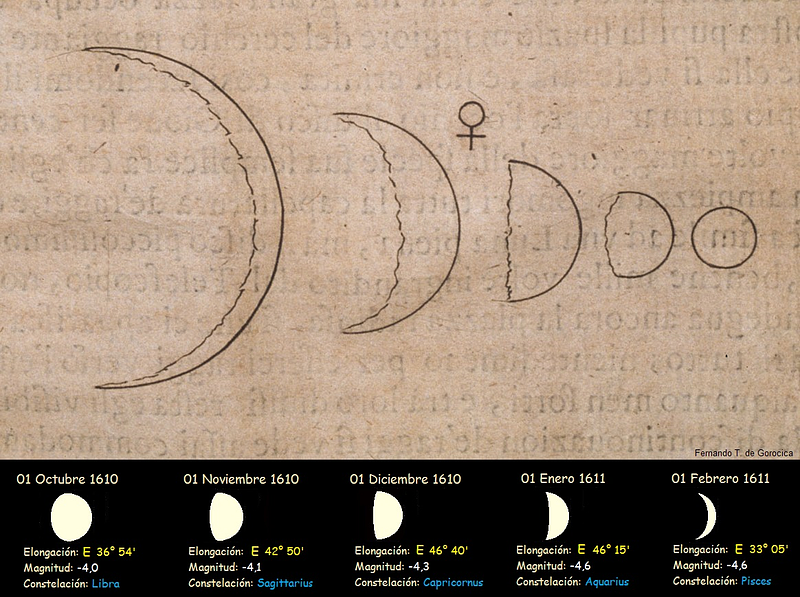Galileo didn’t invent astronomy, but he DID invent mechanical physics

By devising the first truly brilliant physics experiment, Galileo gave us the equations of motion we still use today.
“All truths are easy to understand once they are discovered; the point is to discover them.” –Galileo Galilei
Galileo’s place in history is legendary: a titan among the earliest of the modern scientists. The first to use the telescope for astronomy, Galileo observed:
- the four large satellites of Jupiter, the first direct, observational “proof” of a set of celestial objects orbiting a world other than Earth,
- the “ears” of Saturn, that would later be discovered to be rings, the first discovery that worlds beyond Earth could have structures around them that Earth didn’t have,
- spots on the Sun, now known to be low-temperature, temporary areas (sunspots) that moved as the Sun rotated, and
- phases to the planet Venus, showing how it moved from crescent to half to gibbous to full and then back again, as it moved closer and farther from our perspective, appearing its smallest in the full phase and its largest as a narrow crescent.

Yet, as Thony Christie points out for Aeon, Galileo wasn’t the only astronomer at the time making such observations. In fact, he concludes the following:
even if Galileo had never used a telescope, it would not have changed anything in the history of astronomy… Galileo’s fame rested largely on those telescopic discoveries and his demolition of scientific opponents in public debates and in his writing.
It’s true: the absence of Galileo might have somewhat slowed the acceptance of heliocentrism, but the work of Kepler — and later of astronomers like Huygens, Halley and Newton — would have happened anyway, leading scientists to the same conclusions they drew even with Galileo’s work. Galileo himself had substantial flaws in his own work, even, in comparison to Kepler: never realizing that planetary orbits were elliptical instead of circular, for example. Yet arguably Galileo’s greatest contribution to science wasn’t through the flashy science of astronomy, but something much more mundane: rolling balls down a ramp.

You’ve no doubt heard of Galileo’s famous “Leaning Tower of Pisa” experiment, where he allegedly dropped two balls off the top of the tallest structure he had access to. The two balls were made out off the same material, yet had very, very different masses: one was supposed to be ten times the weight of the other. The argument goes that the rate at which they fall was so similar — with the smaller weight hitting the ground only an imperceptibly small time later — that all objects must be accelerated at the same rate. And that, going further, if we were to remove the effects of air resistance altogether, any and all objects dropped from the same height would hit the ground instantaneously.

This is true! If one were to actually perform Galileo’s alleged experiment, ascending to the top of the Leaning Tower of Pisa with two iron spheres, one that was 10 lbs. and one that was 1 lb., you’d find that the heavier sphere hit the ground a whopping 0.015 seconds earlier than the lighter sphere. This is because the accelerating force is directly proportional to mass, but the decelerating (drag) force operates on surface area, which means the small sphere has 22% the drag force of the larger one, but only 10% of the accelerating (gravitational) force! If one were to remove the air entirely, Galileo reasoned, all objects would accelerate at the same rate. This would be an experiment that wouldn’t be able to be performed for centuries, until we found two ways of doing it: to construct an artificial vacuum, and to journey, ourselves, to a world that had no atmosphere at all to speak of.
Moreover, the objects, under the effects of this acceleration, would cover a certain distance in a given amount of time. It might seem like a mundane achievement by today’s standards, but Galileo was able — through an ingenious experimental setup — to determine that the amount of distance an object in free-fall traveled was proportional to the amount of time that passed, squared. He was able to do this without a stopwatch, without any form of clock at all, without the ability to take a photograph, and without any modern technologies at all.
How did he do it?
By rolling balls down ramps.
It took him approximately 40 years of experimenting to get it just right, but Galileo would set up ramps at different angles and roll balls down them, setting up taut guitar strings at various intervals and listening for evenly-spaced sounds as the ball rolled over them. What he was able to discover is that the spacing between strings needs to follow a pattern that goes as follows: 1, 3, 5, 7, etc. This means the total distance, for regularly spaced intervals of time, follows the pattern 1, 4, 9, 16, etc., or 1^2, 2^2, 3^2, 4^2, etc. Galileo saw that the regularity of the sounds was independent of the angle the ramp was tilted at, and so he concluded that if you took it all the way up to 90 degrees (vertical), you’d not only see the same pattern, but that the acceleration would be due exclusively to gravity!

Public perception aside, Astronomy may have evolved in just the same fashion, with or without Galileo. But his contribution to physics — taking it from an idealized, philosophical science that took place in the mind to one that was firmly rooted in experiment — was nothing short of transformational. Published in 1638, his work “Discorsi e dimostrazioni matematichè intorno à due nuove scienze attenenti alla mecanica et i movementi locali” was the culmination of a lifetime of work, and the equations of motion derived from Newton’s laws are essentially a reformulation of the results of Galileo. Newton indeed stood on the shoulders of giants when he developed the laws of gravitation and mechanics, but the biggest titan of all in the field before him was Galileo, completely independent of what he contributed to astronomy.
This post first appeared at Forbes. Leave your comments on our forum, check out our first book: Beyond The Galaxy, and support our Patreon campaign!





